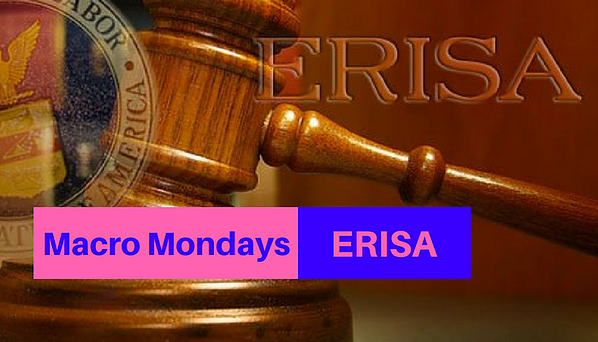Despite all the hoops that the Trump administration has made the Department of Labor jump through regarding the fiduciary rule, the law went into effect on June 9th, with implementation occurring over the next 6 months. What does that mean for you? Basically, it’s now illegal for financial advisors to knowingly screw you over.
Revolutionary legislation, I know, but it’s true. Those who dealt with the sales of stocks and securities could legally act within their own best interests without any disclosure to you and if you ever sued them, it wouldn’t matter because the law never mandated that financial advisors act as fiduciaries and make decisions with the best interests of the client in mind.
For this edition of Macro Mondays, I want to walk you through the main piece of legislation that got us to this point: ERISA laws. These essentially laid the framework for the fiduciary rule, and if you are an individual with an employer sponsored 401(k) plan, you need to know about your rights when it comes to your money. To learn more, be sure to check out the rest of the details on Investopedia’s page.

What is the ‘Employee Retirement Income Security Act – ERISA’
The Employee Retirement Income Security Act of 1974 (ERISA) protects the retirement assets of Americans by implementing rules that qualified plans must follow to ensure plan fiduciaries do not misuse plan assets. Under ERISA, plans must provide participants with information about plan features and funding, and furnish information regularly and free of charge. ERISA also sets minimum standards for participation, vesting, benefit accrual and funding. The law defines how long a person may be required to work before becoming eligible to participate in a plan, to accumulate benefits and to have a non-forfeitable right to those benefits. It also establishes detailed funding rules that require plan sponsors to provide adequate funding for the plan.
How Did ‘ERISA’ get Started?













Leave A Comment